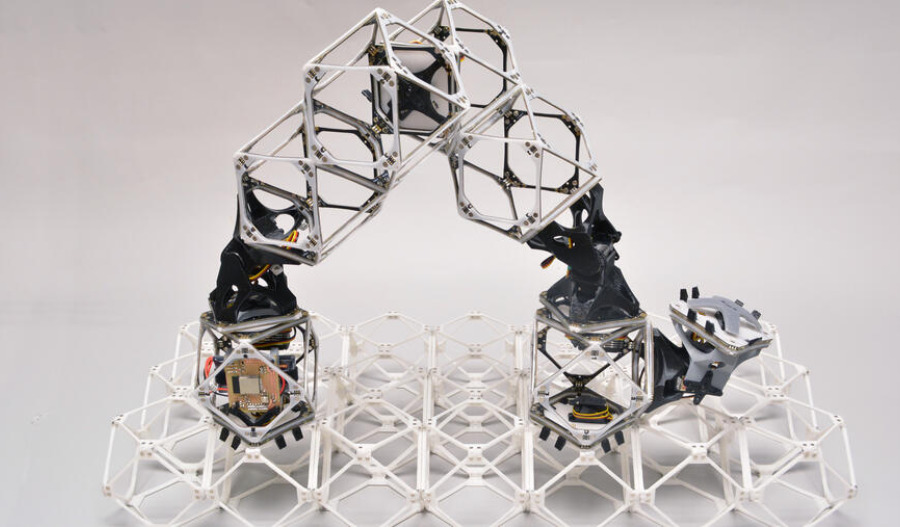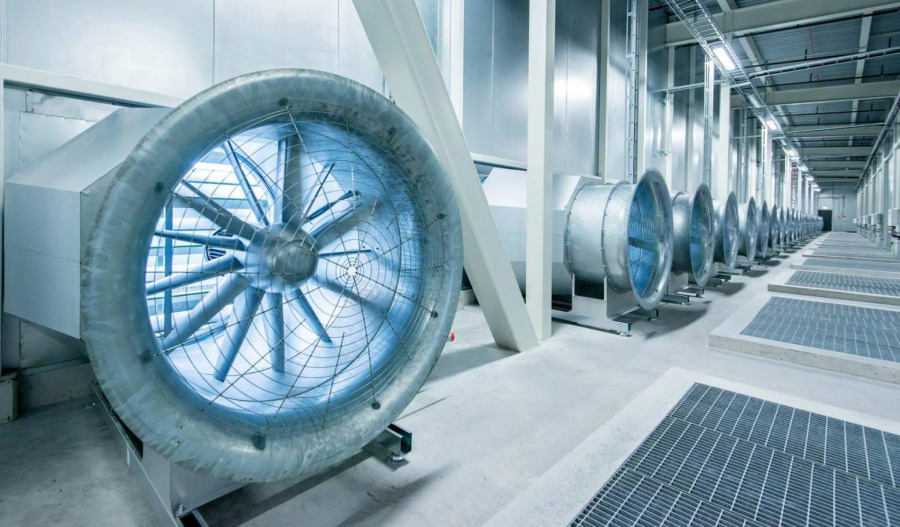Since the launch of OpenAI's ChatGPT in 2022, the integration of artificial intelligence into workflows has accelerated faster than anyone had predicted. In just three years, AI has moved from Silicon Valley curiosity to corporate necessity, fundamentally rewiring how businesses operate across every major industry.
The proof-of-concept purgatory that characterised the technology's early corporate adoption has turned from advancements in small, yet significant increments - to a full-blown sprint by business to adapt.
Here's what we can expect next:
Advanced AI reasoning models (OpenAI, Grok and beyond)
Revolutionary Impact: The emergence of AI reasoning models like OpenAI's o3 and xAI's Grok 4 represents a qualitative shift in AI capabilities, with o3 achieving 87.5% on the ARC-AGI benchmark and Grok 4 setting new records on multiple benchmarks, including Humanity's Last Exam with a 44.4% score.
Business Applications:
- Software Engineering: o3 achieved 69.1% accuracy on software engineering benchmarks, substantially improving over previous models' 48.9%
- Financial Analysis: Complex multi-step reasoning for investment strategies and risk assessment
- Legal Document Analysis: Enhanced contract comparison and legal document processing with step-by-step logical reasoning
- Strategic Planning: Multi-faceted business problem solving with transparent reasoning chains
Why It's Game-Changing: These models don't just generate responses - they demonstrate human-like reasoning processes, making them suitable for high-stakes business decisions that require transparent, logical thinking.
Rollout Timeline: OpenAI has released o3 and o4-mini to Pro, Plus, and Team subscribers as of April 2025, with widespread enterprise adoption expected by Q3 - Q4 2025.
Agentic AI: autonomous digital workers
Revolutionary Impact: Agentic AI systems are emerging as "software solutions that can complete complex tasks and meet objectives with little or no human supervision," with Deloitte predicting 25% of companies will launch agentic AI pilots in 2025, growing to 50% by 2027.
Business Applications:
- Customer Service: AI agents that proactively identify potential issues before customers report them and take corrective actions automatically
- Supply Chain Management: DHL's AI-powered logistics system autonomously adjusts delivery schedules based on traffic conditions, weather patterns, and customer demand
- Financial Services: Financial institutions using agentic AI achieve 40% faster loan processing times and 50% reduction in fraudulent transactions
- Enterprise Operations: Dow built autonomous agents to scan 100,000+ shipping invoices annually, expecting to save millions of dollars in the first year
Why It's Game-Changing: Unlike traditional automation, agentic AI combines autonomy, planning, memory, and integration to shift from reactive tools to proactive business partners.
Rollout Timeline: Latest research shows agentic AI has rapidly emerged as "a major focus of interest and experimentation in enterprise and consumer technology," with production deployments accelerating through Q2 - Q4 2025, and mainstream adoption by early 2026.
Quantum-enhanced AI computing
Revolutionary Impact: The quantum AI market is expected to reach $1.49 billion by 2029 with a 38.7% growth rate, with companies like Quantinuum announcing breakthrough Generative Quantum AI frameworks.
Business Applications:
- Drug Discovery: Quantinuum's upcoming Helios system will be operational by mid-2025 for drug discovery applications, particularly enhancing Metallic Organic Frameworks for drug delivery
- Financial Modeling: Precise predictive modelling of financial markets using quantum-generated data
- Optimisation Problems: Quantum technologies offer solutions to AI's escalating power consumption whilst achieving breakthrough performance gains
- Materials Science: 96% of manufactured goods rely on chemistry and material science, making quantum computing crucial for these applications
Why It's Game-Changing: Quantum AI combines quantum computing's exponential processing power with AI's pattern recognition to solve previously impossible problems.
Rollout Timeline: Microsoft expects 2025 to be the year organisations become "quantum-ready", with practical quantum-AI hybrid applications emerging in late 2025 and scaling through 2026 - 2027.
Neuromorphic computing: brain-inspired AI hardware
Revolutionary Impact: The neuromorphic computing market is advancing brain-inspired architectures, with these specialised chips projected to grow at 108% CAGR by 2025, cutting energy consumption by 1000x compared to traditional processors.
Business Applications:
- Edge Computing: Ultra-low-power processors for wearables and smart homes, enabling AI processing without cloud dependency
- Autonomous Systems: Event-based cameras that mimic human vision, ideal for robotics and drones
- Real-time Processing: Intel's Hala Point system can execute 1.15 billion neurons 20 times faster than a human brain
- Sustainable AI: Experimental deployments demonstrate energy savings of up to 89% whilst maintaining computational accuracy above 95%
Why It's Game-Changing: These chips apply brain-inspired computing principles like asynchronous, event-based processing and integrated memory to achieve orders of magnitude gains in efficiency and adaptability.
Rollout Timeline: Intel has deployed Hala Point at Sandia National Labs in early 2025, with commercial neuromorphic processors expected for edge applications by Q4 2025 and broader deployment through 2026.
AI-powered protein design and biotechnology
Revolutionary Impact: AI-driven protein design is moving from observing and modifying natural systems to engineering new biological solutions from first principles.
Business Applications:
- Pharmaceutical R&D: Companies like Cradle Bio use generative AI to design improved proteins, securing partnerships with Novo Nordisk, Johnson & Johnson, and Grifols
- Industrial Processes: AI-designed enzymes for high-temperature manufacturing and plastic degradation, boosting performance and sustainability
- Personalised Medicine: AI-generated immunogens designed to elicit stronger, broader immune responses against rapidly mutating pathogens
- Materials Innovation: Microsoft's AI2BMD breakthrough enables unprecedented speed and precision in biomolecular science problems
Why It's Game-Changing: Models like MIT's Boltz-2 can now measure molecular binding strength, filling a crucial gap in understanding how molecules interact.
Rollout Timeline: Over 500 FDA submissions with AI components from 2016 to 2023 indicate accelerating adoption, with major pharmaceutical deployments throughout 2025 and regulatory approval pipelines maturing by 2026.
Generative AI-enhanced digital twins
Revolutionary Impact: The digital twin market demonstrates how "generative AI can streamline digital-twin deployment while digital twins provide robust test-and-learn environments for gen AI," - projected to reach $125.7 billion by 2030.
Business Applications:
- Manufacturing Optimisation: Gartner predicts industrial companies could see a 10% improvement in effectiveness via digital twins through reduced downtime and improved performance
- Product Development: Nestlé's digital twin content supply chain powered by NVIDIA Omniverse shows 70% reduced time and cost for scaling digital twins
- Predictive Maintenance: Businesses using digital twins see 30% improvement in cycle times of critical processes, including production lines
- Smart Cities: Various urban elements feed into LLMs to create potential connections and simulate interactions over time
Why It's Game-Changing: Generative AI can streamline digital-twin deployment whilst digital twins provide robust test-and-learn environments for gen AI.
Rollout Timeline: Industry experts predict 95% of IoT platforms will offer digital twinning by 2029, with enterprise implementations scaling rapidly through 2025 - 2026 as computing infrastructure and AI capabilities mature.
Multimodal AI integration
Revolutionary Impact: Multimodal AI integrating diverse data sources like images, video, code, and audio alongside text will become increasingly prevalent in 2025.
Business Applications:
- Customer Experience: AI-powered chatbots that understand and respond to visual cues, accurately triaging health concerns based on shared audio, video, or images
- Content Creation: Advanced systems that generate, edit, and optimise content across multiple formats simultaneously
- Quality Control: Visual insights through foundational models that identify anomalies and damages in utility assets versus manual review
- Healthcare Diagnostics: AI-powered digital therapeutics for Parkinson's disease that analyse patient data in real time, offering personalised treatment plans
Why It's Game-Changing: This enables organisations to provide more sophisticated and personalised customer experiences by combining text, images, and voice commands.
Rollout Timeline: Google reports that multimodal capabilities are already being integrated into Workspace tools throughout 2025, with enterprise-wide deployment expected by Q3 - Q4 2025.
AI-driven scientific discovery growth
Revolutionary Impact: AI's use in scientific research is delivering measurable impact on the throughput of institutions working on challenging global problems.
Business Applications:
- Drug Discovery: More than 500 FDA submissions with AI components from 2016 to 2023, with clinical Trial AI representing 66.6% of total papers in the field
- Materials Research: Revolutionary breakthroughs in developing new materials for energy storage, manufacturing, and construction
- Climate Solutions: Advanced quantum systems for addressing climate challenges and renewable energy optimisation
- Food Production: Green nitrogen production using electricity instead of fossil fuels for more sustainable food growing
Why It's Game-Changing: AI is enabling researchers to explore previously intractable problems and advance biomedical research in protein design, enzyme engineering, and drug discovery.
Rollout Timeline: Scientific AI applications are already accelerating research timelines, with breakthrough discoveries expected throughout 2025 and widespread laboratory integration by 2026.
Custom silicon and edge AI optimisation
Revolutionary Impact: AI reasoning is driving increasing compute demand for semiconductors, while custom silicon solutions are emerging to challenge traditional GPU dominance in AI workloads.
Business Applications:
- Real-time Processing: Chips designed for entirely new architectures that promise more efficient AI training and inference
- Energy Efficiency: Microsoft's custom silicon series Azure Maia and Cobalt, combined with liquid cooling systems for efficient large-scale AI systems
- Edge Computing: Specialised processors enabling AI capabilities in IoT devices, smartphones, and autonomous systems
- Cost Optimisation: o4-mini demonstrates that smaller, specialised models can achieve remarkable performance for their size and cost
Why It's Game-Changing: The geopolitical chip war and competition from startups like Groq are accelerating innovation in AI hardware architectures.
Rollout Timeline: Nvidia CEO Jensen Huang's comments suggest quantum computing is 15 years away, but custom silicon for AI is deploying throughout 2025, with next-generation chips reaching production by late 2025 - early 2026.
Generative AI for process automation
Revolutionary Impact: AI holds potential to shift how people access and use knowledge, resulting in more efficient problem solving and enabling innovation that benefits everyone.
Business Applications:
- Document Processing: Microsoft AutoGen enables building collaborative, multi-agent systems with modular architecture and human-in-the-loop capabilities
- Code Generation: AlphaEvolve autonomously invents and optimises algorithms across domains including mathematics, data centre scheduling, and chip design
- Customer Intelligence: LLMs generating consumer personas based on product descriptions, creating plausible shopper profiles with names, ages, occupations, and preferences
- Workflow Optimisation: Early adoption focused on proving technical feasibility, but now AI is poised to drive systemic change that delivers real value
Why It's Game-Changing: AI can lower skill barriers, helping more people acquire proficiency in more fields, in any language and at any time.
Rollout Timeline: Latest analysis shows organisations are moving from experimentation to optimisation in 2025, with "about a quarter of organisations self-reporting that they are scaling" AI use, and enterprise-wide generative AI deployments accelerating through Q2 - Q4 2025.



